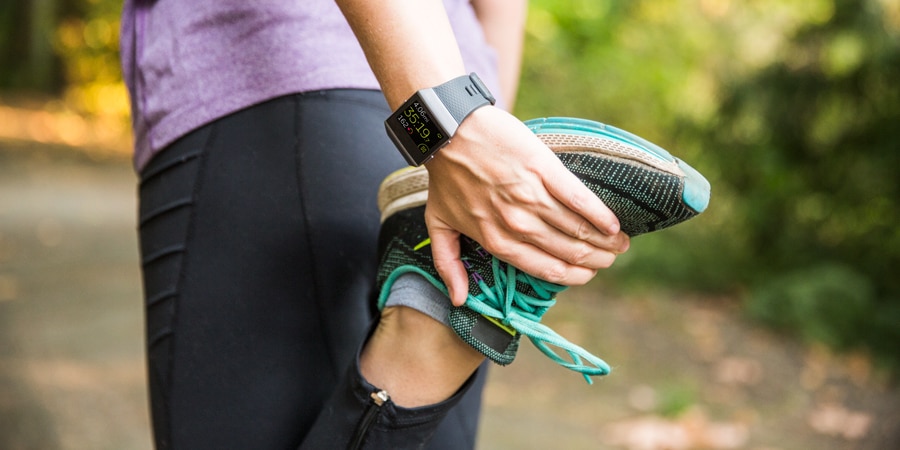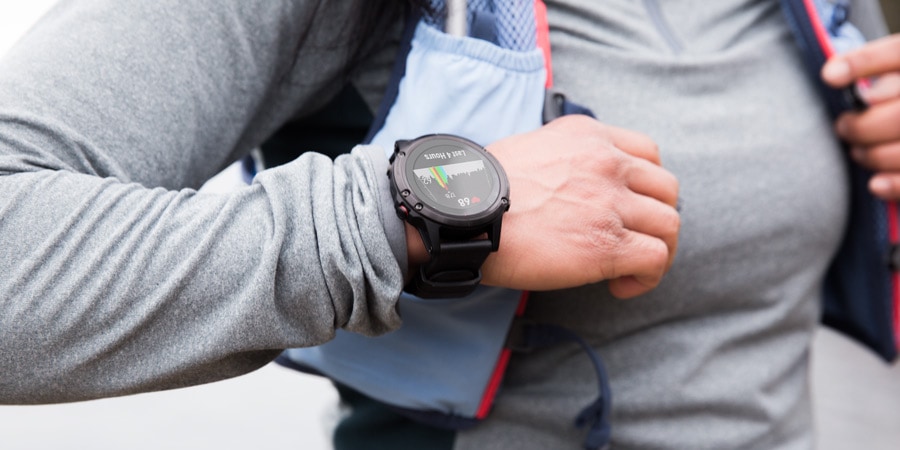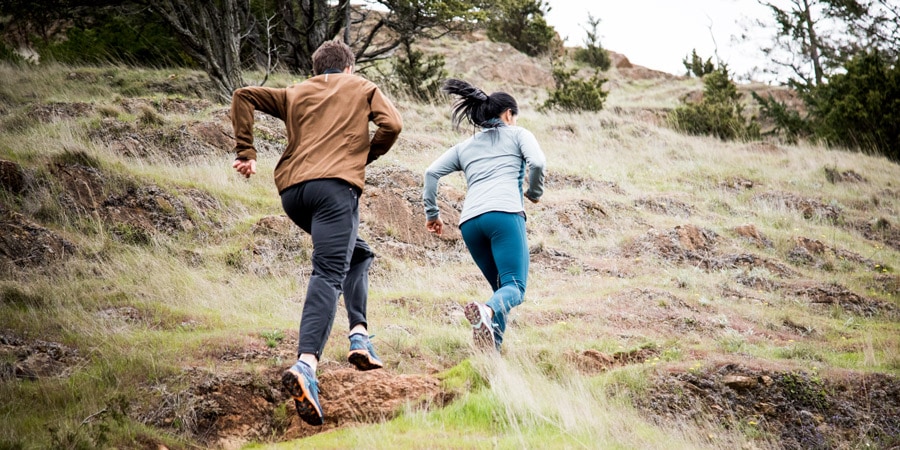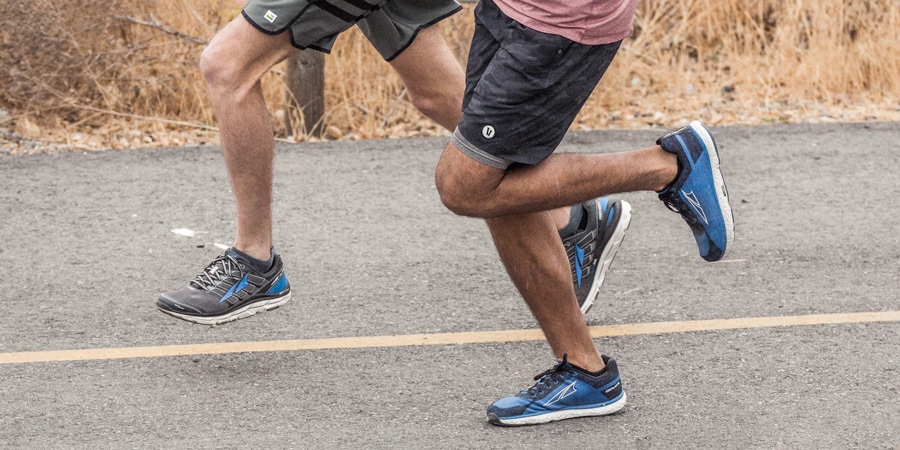If you've ever found yourself out on a run and agonizing over whether you're going too fast or too slow, you're not alone. Knowing how to pace yourself is an acquired skill—and one handsomely rewarded with feel-good endorphins, a sense of accomplishment and sometimes a new finisher's award, PR (personal record) or spot on a podium.
How you pace yourself will, of course, depend on whether you're doing a workout or running a race. Training workouts are opportunities to practice a variety of paces, whereas races are your opportunity to put your pacing skills to the test.
At any given moment, many variables can affect your running pace. Some are external: the distance you're trying to cover, the nature of the terrain, the weather. Some variables are internal: your mental state, how your body feels (including how recovered it is from previous workouts or races), your pre- and mid-run hydration and fueling.
Effective pacing takes all these factors into consideration and helps you determine how fast or hard to run for the best possible result.
How Running Pace Differs on Trail vs. Road

Your pacing strategy will vary significantly based on whether you're running on trails or roads.
On roads, running pace tends to be straightforward. For most runs—other than special workouts like speed intervals—you'll want to aim for a steady, consistent per-mile pace from start to finish. Any hills along your route may have a small impact, but overall, if you're doing things right, your average running pace shouldn't vary much from mile to mile.
On trails, your running pace is apt to be slower overall, and much less consistent from mile to mile. While you might run 9-minute miles on the road, don't be surprised if on trails, your average pace works out to 13-15 minutes per mile—or slower, depending on how steep or technical the terrain is. While a smooth, runnable downhill mile might take you as little as 6-8 minutes, a steep uphill mile might take 20-25 minutes. (And yes, it's OK to walk; briskly hiking up climbs instead of running them is a great pacing strategy for challenging trail runs.)
Six Different Pacing Strategies for Runners
The first three strategies can be used either in training or on race day, while the latter three are unique to one or the other.
1. How to Run by Feel (or RPE—Rating of Perceived Exertion)

This strategy lets you adjust your pace based on how you feel both physically and mentally—speeding up when things feel easy, easing back when you start to get winded.
Pros and Cons of Running by Feel (RPE)
| Pros | Cons |
|---|---|
|
|
Running by feel involves responding to what's sometimes called RPE, or "rating of perceived exertion." It is a subjective number you come up with for how hard your pace feels at any given moment on a run. It's usually expressed on a scale of 1-10:
Understanding the RPE Scale
| RPE | Pace | How to Estimate It |
|---|---|---|
| 1-2 | Easy run | Relaxed; you can carry on a conversation |
| 3-5 | Long run | Moderate; you can speak sentences |
| 6-8 | Tempo run | Challenging but sustainable; you can speak single words |
| 9-10 | Speed run | Very challenging; you can't speak comfortably |
If you're working with a coach or following a specific training plan (such as our trail-oriented 5K & 10K and Half & Full Marathon training plans), you'll probably have workouts that fall into these broad categories. The more you train, the more you'll hone your sense of these paces—and for what distances you can sustain each type.
2. How to Run with a Heart-Rate Monitor

Think of heart-rate monitor training as the objective-data version of running by feel. Your heart rate will generally correlate with your RPE—but it's an objective number that can be tracked and measured by a wrist-based or chest-strap monitor.
Pros and Cons of Heart-Rate Monitor Training
| Pros | Cons |
|---|---|
|
|
Coaches or training plans that rely on heart-rate monitors will first have you calculate your maximum heart rate, i.e., your HR max (you can get a lab test for the most accuracy, do your own test or use an age-based formula for an estimate), then base your training zones on percentages of that figure. For example:
Heart Rate Training Zones
| Percentage of Maximum Heart Rate | Pace |
|---|---|
60-65% of HR max | Easy Run |
70-80% of HR max | Long Run |
85-88% of HR max | Tempo Run |
90% of HR max | Speed Run |
Some alternative HR training methods simplify training zones even further, breaking efforts into two broad categories:
- 60-80% of your HR max: Aerobic training
- 80-100% of your HR max: Anaerobic training
Once you know your zones, you can program them into your fitness watch or connected app. Some devices will alert you with a beep or vibration when you drift out of the heart-rate zone you should be training in. This takes the guesswork out of knowing when to speed up or slow down; you just decide ahead of time what level of effort you want to aim for, then adjust your pace accordingly to keep your heart rate within the proper range.
If you're someone who tends to go out too fast in races, or run too hard on what should be "easy" training days, the heart-rate monitor is a great way to keep yourself in check. It also provides a simple way to pace yourself on tempo runs or race day when you want to run at a consistent, sustained-effort level with minimal brain power. It's least useful for short, high-intensity intervals, due to some lag time in most HR monitors' reporting.
3. How to Pace Yourself with a GPS Watch, Fitness Tracker or App

Any watch, tracker or app that can give you real-time pace data while you're running is an invaluable tool—most especially for road runners. (Because per-mile pace varies so much on trails, and also because GPS data isn't always 100 percent accurate on trails with many twists and turns, steep elevation changes or heavy forest canopy, the real-time pace data on these devices is less useful than other metrics like time, distance, RPE or heart rate.)
Pros and Cons of Pacing with Electronic Trackers
| Pros | Cons |
|---|---|
|
|
Some watches let you set "pace alerts" to notify you if you're ahead or behind a set goal pace for each mile. Otherwise, real-time pace data is usually displayed on your watch as either current pace or average pace.
Keeping your current pace prominently displayed is particularly useful if you're working with a coach or training plan that assigns pace-based workouts (e.g., do this workout at an 8:00 minute/mile pace), or if you're trying to achieve a certain finishing time at a race. Average pace (within a single session) can help you know if you're on track to achieve a certain finishing time at a race, provided it's a relatively flat course from start to finish. Otherwise, it's often a less useful data point to pay attention to while you're running than your current pace—but afterward, it can provide useful comparisons between workouts.
4. How to Pace Yourself on a Treadmill or Track (for Training)

Any runners—even trail runners—who want to improve their fitness and pacing skills can benefit from training on a treadmill or track. The uniform surface and controlled environs make it easy to orchestrate highly precise pacing workouts.
Pros and Cons of Track / Treadmill Pacing
| Pros | Cons |
|---|---|
|
|
Want to try completing a tempo run at an 8:00 minute/mile pace? No need to keep checking your watch to see if you're on pace; just set the treadmill at 7.5 mph and run.
Want to train yourself to run an 8:00 minute/mile pace by feel? Head to the track with a stopwatch and aim to run each lap in exactly two minutes. Finish your lap in 2:15? Crank your speed up a notch. Finish in 1:50? Slow down a touch. Work toward being able to consistently click off each lap within a second or two of your goal; you'll be amazed how this helps you master running a target pace by feel.
5. How to Run with a Pace Group (for Road Marathons or Half-Marathons)
Many big road marathons and half-marathons offer "pace groups" on race day. These groups are led by experienced race volunteers who run with easily visible signs with a projected finish time such as 3:45, 4:00 or 4:30. Pacing yourself becomes as simple as choosing a (realistic!) goal time and sticking close to the pace group leader(s) from start to finish. If you're confident in your training and the attainability of your goal, this is a great way to pace yourself at a road race.
Pros and Cons of Running with a Pace Group
| Pros | Cons |
|---|---|
|
|
6. How to Run with a Pacer (for Ultramarathons)

Due to the nature of singletrack trails, no such thing as a race-sanctioned "pace group" exists in trail races. However, many ultramarathons permit runners to pick up a "pacer" around the halfway point. This is someone you invite to the race to accompany you for a set number of miles and be devoted solely to helping you achieve your race goal—whether that's simply to finish, or to achieve a certain time goal or place.
Pros and Cons of Running with a Pacer
| Pros | Cons |
|---|---|
|
|
If and when you feel tired, your pacer can help motivate you to keep running. If a specific time goal is at stake, a good pacer can help you stay on track even when your own mind gets fatigued.
Decide and discuss in advance how you'd like your pacer to motivate you—by being a positive cheerleader? A tough-love coach? By distracting you with funny stories? By simply accompanying you in relative silence? A pacer might also run either in front or behind you; know and discuss your preferences with your pacer before race day. (Maybe it's a combination! Perhaps you want your pacer behind you when you're feeling strong, and in front of you when you're feeling weak—or vice versa.)
How To Set Your Race Pace

On race day, the challenge of pacing yourself is to let the presence of others inspire you to run faster than you might in training, without getting overzealous, outrunning your ability level and losing steam before reaching the finish line.
Your pace will depend on the distance of your race—it will be significantly slower/easier for an ultramarathon, for example, than for a 5K—as well as the nature of your race goal. For example, is your only goal to make it to the finish? Is your goal to have fun the whole time? If so, you'll want to aim for a relaxed, easy pace (say, RPE 1-4, or below 75 percent of your maxHR) from start to finish.
If your goal is to hit a certain time goal, you'll probably want to aim for a more challenging, yet still sustainable, pace (RPE 5-8, or 80-90 percent of maxHR). If you're trying to set a new personal record, it can be helpful to use past split times (i.e., mile times within the same race, or times on certain segments of the course) to help you know when you might need to step on the gas a bit more.
Perhaps you're a more experienced runner wanting to be competitive with others, and maybe even finish on the podium or break a course record. These types of goals often require the most aggressive, challenging pace (RPE 7-9, or 85-95 percent of maxHR, depending on race distance)—right at the edge of your ability level. With these goals, your pace is also more apt to be influenced by other runners in the race—for better or worse.
Race Day Golden Rule: Start Slow

Ultimately, when it comes to mastering the skill of pacing yourself, there's no replacement for practice, practice, practice. The more you do it, the better you'll become.
If all else fails, respect the golden rule of pacing: start more slowly than you think you should. Most people go out too fast on race day, and you're much more likely to have a positive result if you can incrementally speed up over the course of your race than if you're forced to slow down. It's demoralizing to get passed by hordes of people who paced themselves better than you did.
So, start conservatively, adjust your pace as needed, and cross that finish line with a smile on your face.

